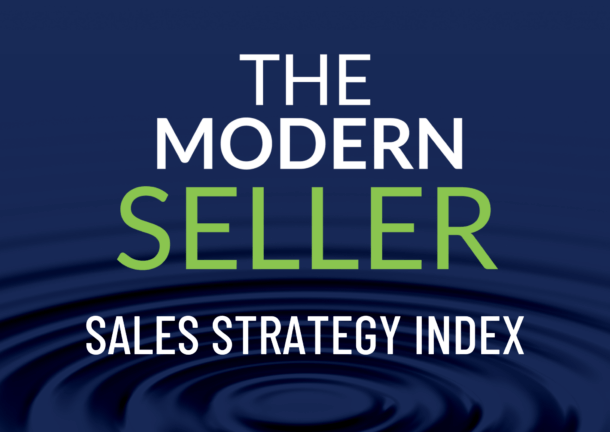What I’m sharing in today’s blog is an article I originally published in Top Sales Magazine, about supply-chain thinking from The Modern Seller. Supply-chain thinking can provide the structure and agility we need, especially when things around us are uncertain.
I’ve added some additional ideas you can apply today, and into the future.
To borrow a phrase from Oprah, here’s “what I know for sure”— our prospects and clients are looking to us for ideas, solutions, and partnership. They’re looking for the certainty that we are the right choice to partner with them, no matter what might be happening out there.
———————————————————————-
Build Your Territory Like a Supply Chain
My sales journey has had two distinct paths. I was an enterprise sales professional with global companies IBM and Lenovo. I then made a pivot into entrepreneurship, founding a learning and development firm. What I’ve learned is that my skills in enterprise-level selling, combined with an entrepreneurial mindset made the difference.
Whether you’re selling for a blue-chip Fortune 500 company or a startup, you’ll benefit from a mix of enterprise and entrepreneurial selling approaches.
One strategy to help you blend both is to build your territory like a supply chain. When you work this way, you’ll build the structure to support you, plus have the agility to pivot, stay relevant, and differentiate yourself. That translates into more wins, top clients, and a highly profitable territory.
Systems Support Success
Underlying any successful organization—startup or mature—are the systems to support it. Without systems, processes, and structure, everything’s really built on a house of cards. Those elements need to be consistently monitored as a holistic ecosystem if we’re going to create long-term sustainable success.
Today’s modern business environments and buyers require us to take a long view of whole ecosystem. Supply chain approaches can help us to do that.
Put Supply Chain Thinking into Practice with Three Maps
Sales Process.
Map your sales process end-to-end. It helps to take a current pursuit or very recent opportunity, and while it’s fresh map out each step you’ve taken along the way thus far. This means looking at everything from prospecting touches and methods to how you qualified it, the buying roles involved, which internal teams and external partners are participating, and what demos or presentations you’ve conducted to date.
Don’t leave anything out. This exercise will provide you with valuable data points and an honest picture of the efforts and their outcomes.
Once you have a full picture of your real-life sales process, now you can align it to your formal selling process, and more importantly, to how your customers buy. If you haven’t mapped out your customer’s buying process, do this first. Buyers have changed so much in the way they buy and in the way they want to engage with us. This process will show where you’re strong and where there are opportunities to improve the chain.
Additional Application Strategy: When you have these processes mapped out, ask these questions: Where is my sales process vulnerable to uncertainty? Where is the customer’s buying process vulnerable to uncertainty? Where might I/my customer need to pivot? How will those pivots potentially affect the outcomes?
Internal Operations.
Map your internal operational processes end-to-end. When organizations see the different connection points within their supply chain, they can find opportunities which can improve the entire ecosystem. I believe this same analysis can also uncover opportunities for sales organizations.
The mapping process applies not to just products, but to software or professional services as well. Modern selling requires us to look past the sales process and into what happens beyond it. How we navigate the post-sale process can mean the difference between a one-time sale and a long-term valuable client that sees us as critical to their success.
Creating a visual map of your various processes can help. Map out your logistics processes, delivery processes, and support processes in as much detail as you can. Include names of people in roles wherever possible because having strong relationships in those roles matters.
You might even get feedback from your best customers to help you with any blind spots.
Additional Application Strategy: When you have these processes mapped out, ask yourself: What points in the operational processes are dependent on outside resources? Where could we experience an interruption? What are the contingency plans if there is an interruption? Have we articulated very clearly what those plans are, both internally and externally?
Ecosystem Partners.
Map your ecosystem partners and processes. With your sales process and internal operations in hand, now you can line up your ecosystem partners as part of your process.
This involves knowing your ecosystems: internal, external, and upstream (think the suppliers of your suppliers). These are the support systems that make things go, and free you up to sell. It might even include your competitors. Alliance firms are an example in professional services. Alliance firm members are competitors in some cases and collaborators in others. They combine forces to serve a customer in a unique situation that neither firm may be able to take on individually.
These creative partnerships extend the client experience and create opportunities which wouldn’t otherwise exist.
Also, different ecosystem partners enter in at different points of the sales process, buying process, or internal operations. For each element in your processes, note the ecosystem partners you either have or might need to fill in any gaps in the customer experience.
As an extension of this exercise, you might work with a couple of customers representative of your territory and map their processes: buying processes prior to selecting you, and the operational processes once they’ve selected you. This will provide you with data points as to where you’re providing value, and where there may be future opportunities to help them become even better.
Additional Application Strategy: When you have your ecosystems mapped out, ask yourself: How strong are these partnerships in times of uncertainty? Where can I forge other creative partnerships to shore up my ecosystem? Where might there be community or public/private partnerships? What is my Top 5 list of ecosystem partners, where we commit to collaborating with one another in times of uncertainty?
For more entrepreneurial selling tips, watch this video.
Grow Your Sales Territory with an Entrepreneurial Mindset from Amy Franko on Vimeo.


 Our Strategic Selling signature sales training program is now available online. This online sales learning program is ideal for professional services and B2B sales. Get started with 2 free lessons.
Our Strategic Selling signature sales training program is now available online. This online sales learning program is ideal for professional services and B2B sales. Get started with 2 free lessons.